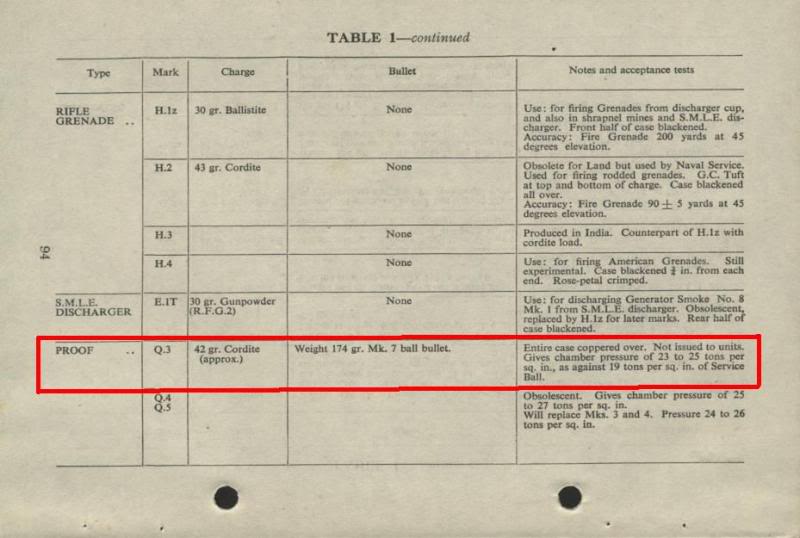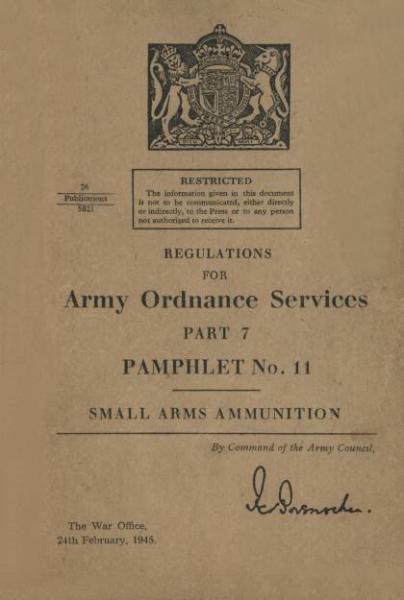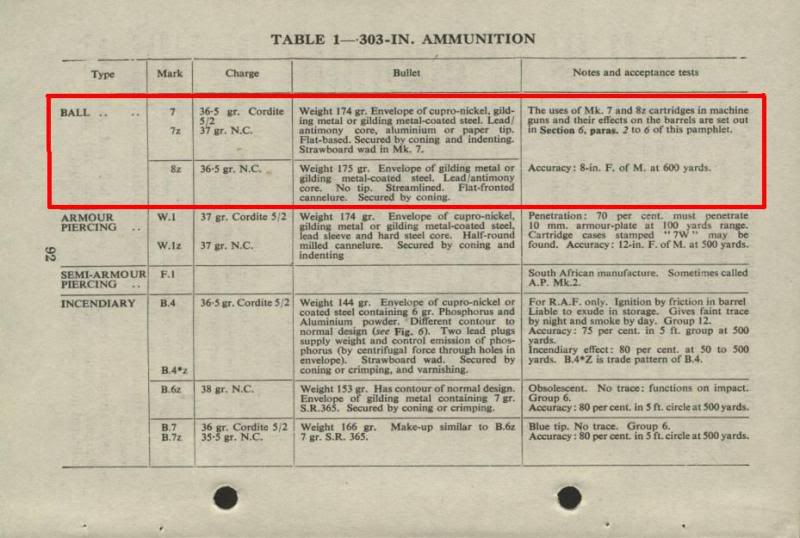-
Banned

British pressure and a soup sandwich
-
05-12-2009 08:34 PM
# ADS
Friends and Sponsors

-
Advisory Panel


Long tons.
Generally speaking, it can be difficult to compare numbers without knowing how the pressures were obtained.
-
-
Advisory Panel


The traditional British and US systems for copper crusher pressure measurements were quite different and gave different results with the same ammunition. The British "base crusher" system was axial in operation, with the crusher incorporated in the breech block. The oiled case acted as the moving piston and the crusher was drilled for the firing pin. The US system was radial, with the barrel drilled for a piston moving at 90 degrees to the chamber axis. In general, the British base crusher system gives results less than the US radial crusher gauge by about 10% with the same ammunition.
and US systems for copper crusher pressure measurements were quite different and gave different results with the same ammunition. The British "base crusher" system was axial in operation, with the crusher incorporated in the breech block. The oiled case acted as the moving piston and the crusher was drilled for the firing pin. The US system was radial, with the barrel drilled for a piston moving at 90 degrees to the chamber axis. In general, the British base crusher system gives results less than the US radial crusher gauge by about 10% with the same ammunition.
.303 rifles proofed for export from the UK normally are seen marked 18.5 tons, (41,440 lbs), an approximate working pressure of British .303 ammunition measured with the base crusher system. This translates to some 10% more - 45,584 lbs. - with the radial crusher.
Aussies are independent-minded and don't necessarily adopt British methods or standards when they have a different idea. The Australian figures quoted appear to be based on the radial system. If this assumption is correct, the 46,390 lbs. given for late Mk.7 ball is not very far from the 45,000 c.u.p. (radial) working pressure long accepted for US .303 ammunition. The notion that US .303 is now limited to a lower pressure is plausible given our litigious climate, but possibly shouldn't be taken at face value if from a single source. (People who write loading manuals make mistakes, too.) Here's an example from Hercules, listing the 45,000 c.u.p. figure -
figures quoted appear to be based on the radial system. If this assumption is correct, the 46,390 lbs. given for late Mk.7 ball is not very far from the 45,000 c.u.p. (radial) working pressure long accepted for US .303 ammunition. The notion that US .303 is now limited to a lower pressure is plausible given our litigious climate, but possibly shouldn't be taken at face value if from a single source. (People who write loading manuals make mistakes, too.) Here's an example from Hercules, listing the 45,000 c.u.p. figure -

(See Handloading, NRA, 1981, pp. 130, 201 for more detail on pressure measurement and .303 working pressure.)
-
-
Banned

Parashooter
The three photos of the 1945 manual above list standard pressure as 19 tons and proof test rounds as 23 to 25 tons, I can not find any dates as to if or when the “base” crusher method was changed.
I have now seen standard .303 pressure rated at 17.5, 18.5, 19, and 20.7 tons.
Tons, tonns, short tons, long tons, metric tons, color, colour, boot, trunk, bonnet, hood, the Enfield inch, and what ever you do don’t give the peace sign in Briton because it has to do with plucking yew and the French .
.
Cartridge Pressure Standards
Next time I’m going to buy an American Enfield and see what pressures are stamped on it 

-
Legacy Member

Ed the proof stamps on export rifles only shows what the proof house did not what the military did previous. It would seem that there is no correlation between the different systems used to measure pressure. The old adage of the powder that most fills the case for the desired velocity gives the lowest pressure. ( bench mark MkV11 @ 2450 fps in a standard rifle) Fire MkV11 over your chrony then your reload or factory load the only thing not shown will be where the pressure curve is but the shoulder will know
-
-
(Deceased April 21, 2018)

Ed, I really hope you didn't buy that tarted up excuse for a rifle!
-
Advisory Panel


Ed, you'll probably not find any reference to a UK change from the base crusher system. As far as I know, they're still using it for some of the older cartridges, just as the radial crusher system is still sometimes used in the USA . It's one of those "ain't broke, don't fix" deals. Note this from the website you referenced a few posts up -
. It's one of those "ain't broke, don't fix" deals. Note this from the website you referenced a few posts up -
In Britain, a third set of crusher standards were developed, using a "base" crusher. The crusher was a short, thick tube placed behind a piston at the base of the cartridge, and the firing pin passed through the center. The cartridge case was well oiled before firing, to minimize cling to the chamber walls (if not oiled, the indicated pressures were about 25% lower). To prevent case rupture on set back of the base, the crusher was first deformed in a press to a pressure a bit lower than that expected in firing. The units were generally stated in British long tons per square inch, or tsi. Pressures indicated by this method run 10 to 20% below those indicated by radial crushers. Kynamco in England still rates their production cartridges with this method.
still rates their production cartridges with this method.
My comment was in reference to the Australian pressures you quoted -
pressures you quoted -
In Skennertons “Australian SMLE Variations” I saw that the older Australian cordite .303 round was 19.07 t.s.i = 42,720 PSI ? and this was later increased for later Mk.VII rounds to 20.71 t.s.i = 46,390 PSI?
Those look like radial-system figures to me. As I'm sure you know, Lithgow was set up with Pratt & Whitney tooling from Connecticut. Maybe radial-system pressure-test equipment was included.
One can get very frustrated trying to nail down pressure numbers to the last trivial ton or two. A variation up to around 15% in pressure results from carefully-made "reference ammunition" fired in the same pressure gun is apparently considered normal (Handloading, NRA, p.128).
Last edited by Parashooter; 05-13-2009 at 02:32 PM.
-
-
Banned


Originally Posted by
John Sukey

Ed, I really hope you didn't buy that tarted up excuse for a rifle!

Mr. Sukey
I can’t believe you are making fun of this Enfield, for only three additional payments of $39.95 I ordered the John Wayne Iwo Jima Commemorative Enfield. Of course this is on top of the other 19 payments of $39.95 but who cares, who else do you know that has an Enfield signed by John Wayne.
(I already took everything apart and even the bolt, I can’t read the proof markings they are in Chinese)
I found the Commemorative Enfield photo in the very back of an American Legion magazine next to a pair of 20 power binoculars for $9.95, the lens are specially treated and coated, even on a very bright day at the beach its very dark when you look through them.
Now kiss me John and turn me into a Prince…………………..

-
FREE MEMBER
NO Posting or PM's Allowed


Originally Posted by
John Sukey

Ed, I really hope you didn't buy that tarted up excuse for a rifle!

I don't know a No.4 Dressed up like that may make a good graduation present. 
Dimitri
-
FREE MEMBER
NO Posting or PM's Allowed

The British "long" ton is 2240 pounds, so 19 tons per square inch would be 42,560 pounds per square inch. In British proof marks, the figure indicated is the standard working pressure of the cartridge, not the proof pressure, which is around 20-25% higher.
"long" ton is 2240 pounds, so 19 tons per square inch would be 42,560 pounds per square inch. In British proof marks, the figure indicated is the standard working pressure of the cartridge, not the proof pressure, which is around 20-25% higher.
I am not sure what the discussion of this crusher or that crusher has to do with it; tons per square inch is tons per square inch, no matter how it is obtained. Some systems may measure more accurately than others, but an inch is still an inch and a ton is still a ton. (Sounds like song lyrics, doesn't it?)
Jim
or Commonwealth mathematicians in the house.
SMLE Variations” I saw that the older Australian cordite .303 round was 19.07 t.s.i = 42,720 PSI ? and this was later increased for later Mk.VII rounds to 20.71 t.s.i = 46,390 PSI?
 Information
Information
















 Register To Reply
Register To Reply














